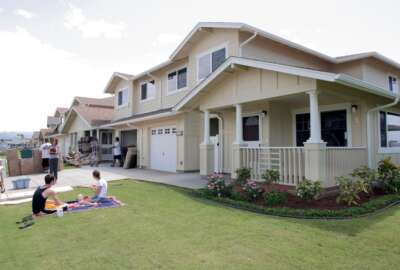
Number of service members eligible for COLA continues to drop in 2020
Only about 12,300 service members will receive cost of living adjustments in 2020.
The number of service members in the United States who will receive pay for living in high cost areas will continue to shrink in 2020, after 2019 saw a 46% drop in people eligible for the benefit.
This coming year’s drop is not as drastic; 12,300 service members will receive cost of living adjustments (COLAs) — a decrease from about 15,000 in 2019. Last year, the number went from 28,000 to 15,000.
The Defense Department defines COLAs as, “a taxable, supplemental allowance designed to help offset higher prices in the highest cost locations in the U.S. that exceed the costs in an average U.S. location. Rates can increase, decrease or remain the same, depending on the non-housing prices in a duty location as compared to non-housing prices in an average U.S. location,” according to a Dec. 20 statement from the Pentagon.
DoD will pay out about $20.2 million in COLAs in 2020, $1.9 million less than 2019. About 3,300 service members will see an increase in COLAs and 4,100 will see a decrease.
The areas with the highest COLA rates are Oakland and San Francisco, California, as well as Staten Island, New York. Those areas receive a 6% COLA.
The largest increase goes to St. Joseph, Missouri, which will go from not receiving COLA in 2019 to getting a 2% rate.
Conversely, Detroit, Michigan and Willow Grove, Pennsylvania, will see the largest drop in COLA by going from 3% to not getting a stipend at all.
The total amount of a COLA a service member receives varies based on geographic duty location, rank, years of service and dependency status. Payments range from $32 to $60 per month for members with dependents, and $22 to $45 per month for members without dependents.
DoD hires a contractor to decide the COLA rates. The contractor looks at indicators like transportation, goods and services, federal income taxes, sales taxes and miscellaneous expenses and then creates a cost data average that serves as a benchmark.
Related Stories
DoD also recently put out its basic allowance for housing (BAH) numbers, which helps pay rental and mortgage costs for all service members.
The average service member will receive a 2.8% increase in BAH in 2020.
Austin, Texas, will get the biggest BAH increase, based on an average of all paygrades there at the “with dependent” rate. The stipends at the new home of the Army’s Futures Command will rise by between 16%-45%, depending on rank, for an average increase of 29%.
Other areas with large increases include Mountain Home Air Force Base in Idaho (21%), and in the Atlanta (15%) and Mobile, Alabama, (15%) markets.
Meanwhile, some of DoD’s designated military housing areas will see significant decreases. BAH rates at Fort Polk, Louisiana, will drop by an average of more than 7%. Cleveland, Ohio, and Paducah, Kentucky, will have even larger decreases: 8% and 10%, respectively.
Copyright © 2025 Federal News Network. All rights reserved. This website is not intended for users located within the European Economic Area.
Scott Maucione is a defense reporter for Federal News Network and reports on human capital, workforce and the Defense Department at-large.
Follow @smaucioneWFED






